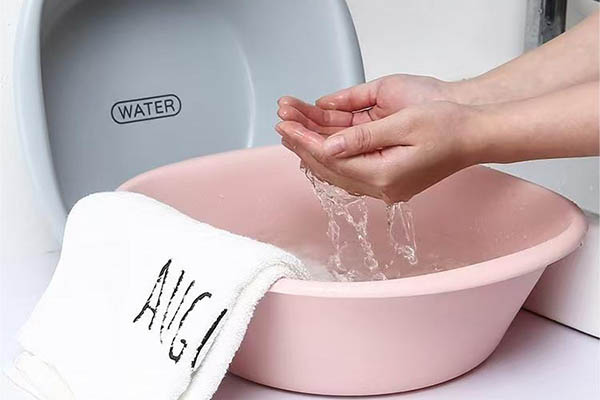In many households, plastic basins are a common tool for various tasks, from washing dishes to doing laundry. They are lightweight, affordable, and easy to store, making them a popular choice for daily chores. However, a question that often arises is whether it is safe to pour boiling water into a plastic basin. The answer to this question depends on several factors, including the type of plastic, the temperature of the water, and the intended use. Understanding these factors is crucial for ensuring both safety and the longevity of your plastic products.
Types of Plastic and Their Heat Resistance
Not all plastics are created equal. Different types of plastics have varying levels of heat resistance, which determines whether they can safely hold boiling water. Most plastic basins are made from materials like polyethylene (PE), polypropylene (PP), or polyvinyl chloride (PVC). Each of these plastics has a specific melting point and level of heat resistance.
- Polyethylene (PE): This is one of the most common plastics used in household items. It is generally not recommended to expose PE to boiling water, as its melting point ranges from 105°C to 115°C (221°F to 239°F). Boiling water, typically at 100°C (212°F), can cause PE to warp, soften, or even melt over time, especially if the exposure is prolonged.
- Polypropylene (PP): PP is more heat-resistant than PE, with a melting point of around 130°C to 171°C (266°F to 340°F). Many plastic containers and kitchenware are made from PP because they can withstand higher temperatures without deforming. While PP can handle boiling water better than PE, continuous exposure to boiling temperatures can still weaken the material over time.
- Polyvinyl Chloride (PVC): PVC has a lower melting point, generally between 100°C to 260°C (212°F to 500°F), depending on the additives used during manufacturing. However, PVC is typically not used for containers that might be exposed to boiling water because it can release harmful chemicals, especially when exposed to high heat.
Potential Risks of Using Boiling Water in Plastic Basins
Pouring boiling water into a plastic basin can pose several risks, both to the basin itself and to the user. These risks include:
**1. Melting or Warping
Even if a plastic basin doesn’t immediately melt when exposed to boiling water, it may warp or become misshapen. Warping can compromise the basin’s structural integrity, making it more prone to cracking or breaking in the future. This is particularly true for lower-quality plastics or basins that are not specifically designed to withstand high temperatures.
**2. Chemical Leaching
One of the primary concerns when exposing plastic to high temperatures is the potential for chemical leaching. Certain plastics can release harmful chemicals, such as BPA (bisphenol A) or phthalates when exposed to heat. These chemicals can contaminate the water and pose health risks if ingested or if they come into contact with food or skin. While many modern plastic products are BPA-free, it’s still important to consider the type of plastic and whether it is designed for hot liquids.
**3. Shortened Lifespan
Repeated exposure to boiling water can degrade the quality of plastic over time. Even if the basin doesn’t show immediate signs of damage, the repeated stress from high temperatures can cause the plastic to become brittle, increasing the likelihood of cracks or breaks with regular use.
Safe Alternatives to Plastic Basins
Given the potential risks, it’s advisable to use materials that are specifically designed to handle boiling water. Here are some safer alternatives:
- Stainless Steel Basins: Stainless steel is highly heat-resistant and does not pose any risk of chemical leaching. It is durable, easy to clean, and can safely hold boiling water without any risk of melting or warping.
- Heat-Resistant Glass or Ceramic: For certain tasks, heat-resistant glass or ceramic basins are also a good option. These materials can withstand high temperatures and are commonly used in kitchens for tasks involving hot liquids.
- Silicone Basins: High-quality silicone is another material that can handle boiling water. Silicone basins are flexible, heat-resistant, and do not leach harmful chemicals. However, they are less common and may not be suitable for all types of household tasks.
If You Must Use Plastic
If you need to use a plastic basin and are concerned about its ability to handle boiling water, consider the following precautions:
- Cool the Water Slightly: Allow boiling water to cool for a few minutes before pouring it into a plastic basin. This reduces the temperature enough to minimize the risk of damaging the plastic.
- Use Heat-Resistant Plastic: If you must use plastic, choose a basin made from heat-resistant materials like polypropylene (PP). Always check the manufacturer’s guidelines to ensure that the basin is rated for high-temperature use.
- Limit Exposure: Avoid leaving boiling water in the plastic basin for extended periods. Pour the water in, complete your task quickly, and then empty the basin to reduce the time the plastic is exposed to high heat.
Conclusion
While plastic basins are convenient and versatile, they are not always the best choice for holding boiling water. The type of plastic, the risk of chemical leaching, and the potential for damage all make it important to consider safer alternatives like stainless steel, glass, or silicone. If you do use a plastic basin, taking the appropriate precautions can help minimize risks and extend the life of your basin, ensuring safe and effective use in your home.
Post time: 09-04-2024




